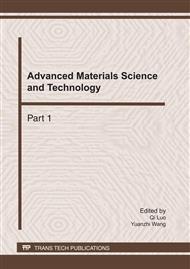p.744
p.749
p.754
p.760
p.765
p.770
p.776
p.782
p.787
Voice Activity Detection Based on Multiple Statistical Models
Abstract:
One of the key issues in practical speech processing is to achieve robust voice activity detection (VAD) against the background noise. Most of the statistical model-based approaches have tried to employ the Gaussian assumption in the discrete Fourier transform (DFT) domain, which, however, deviates from the real observation. For a class of VAD algorithms based on Gaussian model and Laplacian model, we incorporate complex Laplacian probability density function to our analysis of statistical properties. Since the statistical characteristics of the speech signal are differently affected by the noise types and levels, to cope with the time-varying environments, our approach is aimed at finding adaptively an appropriate statistical model in an online fashion. The performance of the proposed VAD approaches in stationary noise environment is evaluated with the aid of an objective measure.
Info:
Periodical:
Pages:
765-769
Citation:
Online since:
January 2011
Authors:
Keywords:
Price:
Сopyright:
© 2011 Trans Tech Publications Ltd. All Rights Reserved
Share:
Citation:


